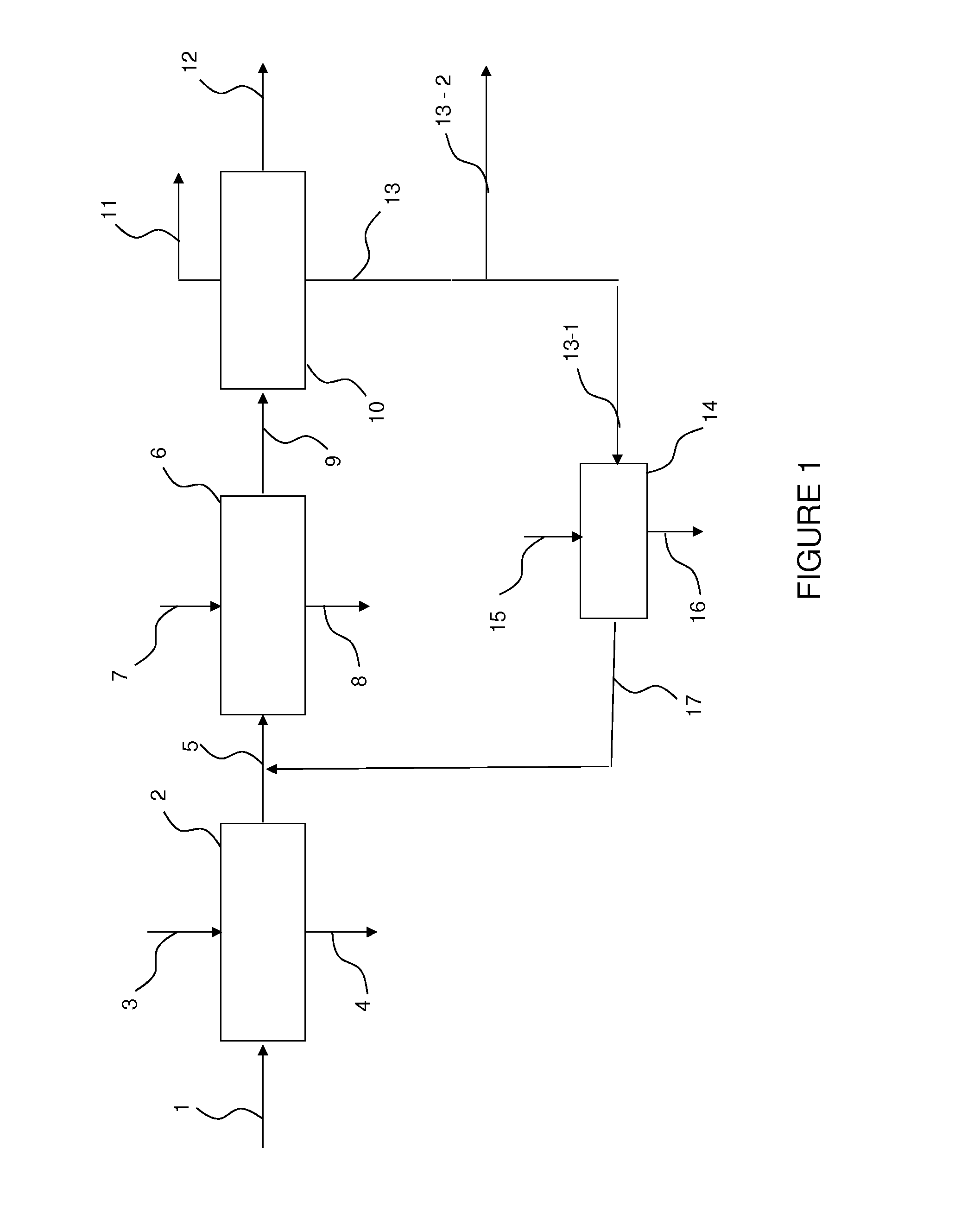Method for producing alcohols and/or solvents from paper pulps with recycling of the non-hydrolysated plant material in a regeneration reactor
a technology of paper pulp and regeneration reactor, which is applied in the direction of biofuels, chemical recycling, fermentation, etc., can solve the problems of difficult economic validity of this type of process for the production of alcohol and/or solvent, slow enzymatic feedstocks that do not enhance the pretreatment substrate well, and are not directly accessibl
- Summary
- Abstract
- Description
- Claims
- Application Information
AI Technical Summary
Benefits of technology
Problems solved by technology
Method used
Image
Examples
example 1
Material Balance—Without Recycling (Not In Accordance with the Invention)
[0075]A process for the production of ethanol from papermaking pulp obtained from a Kraft alkaline process is considered. The process treats 80 tons / hour of native vegetation. The vegetation is spruce (softwood), containing 55% by weight of dry material that consists of:
Cellulose42%Lignin30%Hemicellulose15%Others (Ashes,13%Extractibles)
[0076]The hemicelluloses consist of 50% mannans.
[0077]The Kraft baking is carried out at 175° C. for 5 hours. This pretreatment and the washing processes carried out in stages a) and b) respectively are conducted in such a way that the papermaking pulp contains 15% dry material, and has preserved the following:
Cellulose97%Lignin10%Hemicellulose52%Others8%
[0078]The ethanol conversion process consists of enzymatic hydrolysis of the papermaking pulp (stage c)) followed by alcohol fermentation into ethanol (stage d)), a separation of the solids in suspension for forming a cake, disti...
example 2
Material Balance—With Recycling of the Solid Residue at the Level of the Enzymatic Hydrolysis (Not in Accordance with the Invention)
[0088]It is possible to recycle the cake at the enzymatic hydrolysis stage so as to limit the losses of cellulose. Nevertheless, in the absence of treatment, the cellulose called “recalcitrant” has a very reduced sensitivity to enzymatic hydrolysis relative to the cellulose of the papermaking paste. Its hydrolysis yield (under the conditions of the process above), and with the same enzymatic feedstock, will be only 30%. In addition, the recycling brings about the accumulation of insoluble products (lignin) in the process, and the fermentation, under the conditions of the process above, is to be carried out with a maximum of 8% of solid material in the reaction medium. Thus, it is necessary to limit the quantity of recycled cake, and, in practice, only 68% of the cake can be recycled. The following exiting flows of the process are then obtained:[0089]Eth...
example 3
Material Balance—With Recycling within a Regeneration Reactor (According to the Invention)
[0094]On the basis of the process that is described in Example 1, a recycling of 90% of the cake that is created is introduced into a regeneration reactor, where the cake undergoes a “mild” baking at 110° C. for 1 hour in the presence of sodium sulfate, before being mixed with the pretreated native vegetation downstream from the pretreatment reactor 2.
[0095]Thus, 27.18 tons / hour of moist cake that contains 52.2% of cellulose is recycled at the regeneration reactor. The cost of this type of baking is less than that of the rigorous treatment carried out in the reactor 2 for the pretreatment of native vegetation. Furthermore, the recycled cellulose is no longer much protected by the lignin, since the ligneous sheath that protects the fibers has been largely removed during the pretreatment, and therefore a milder and shorter baking is adequate for imparting to cellulose fibers their full susceptibi...
PUM
| Property | Measurement | Unit |
|---|---|---|
| temperature | aaaaa | aaaaa |
| temperature | aaaaa | aaaaa |
| temperature | aaaaa | aaaaa |
Abstract
Description
Claims
Application Information
 Login to View More
Login to View More - R&D
- Intellectual Property
- Life Sciences
- Materials
- Tech Scout
- Unparalleled Data Quality
- Higher Quality Content
- 60% Fewer Hallucinations
Browse by: Latest US Patents, China's latest patents, Technical Efficacy Thesaurus, Application Domain, Technology Topic, Popular Technical Reports.
© 2025 PatSnap. All rights reserved.Legal|Privacy policy|Modern Slavery Act Transparency Statement|Sitemap|About US| Contact US: help@patsnap.com

